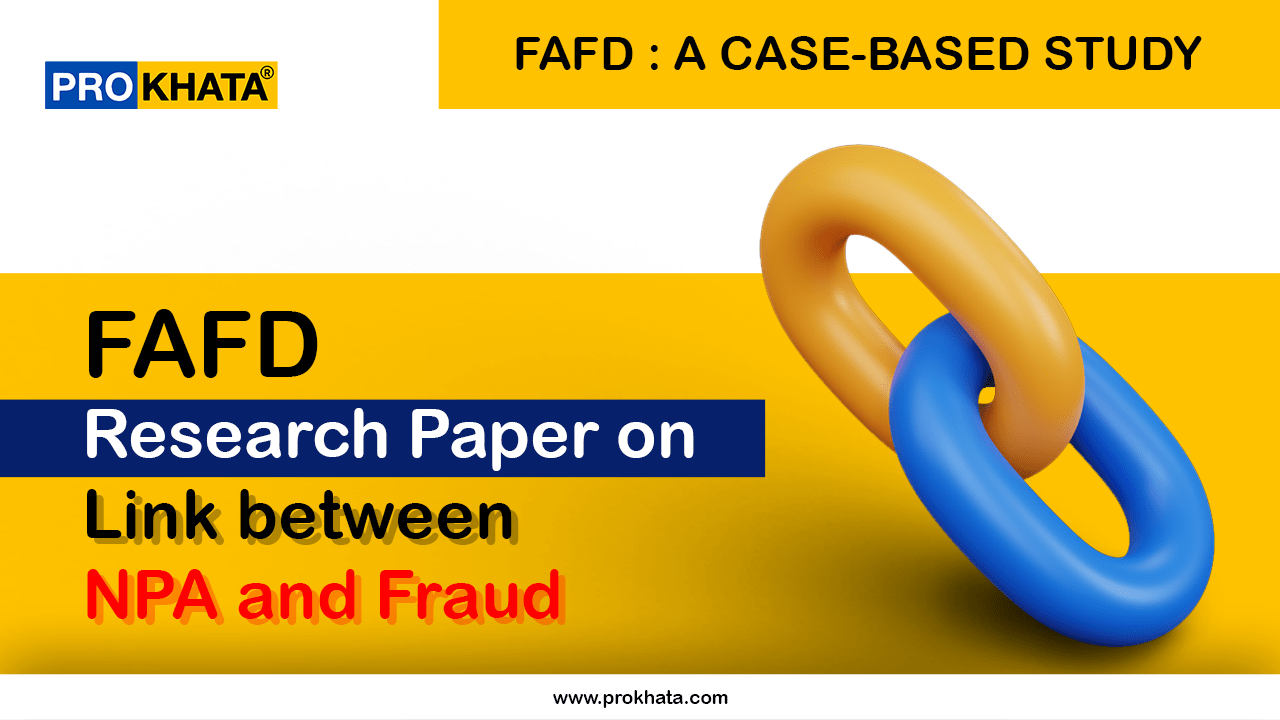
Title: An Empirical Examination of the Link between Non-Performing Assets and Fraudulent Activities: A Case-Based Study
Abstract:
This paper probes the connection between Non-Performing Assets (NPAs) and fraudulent activities within banking institutions. By analyzing a series of real-life examples, it provides empirical evidence of this link and explores the implications for forensic accounting practices and fraud detection. Our findings reveal a strong correlation between high levels of NPAs and a higher incidence of fraud, driven by a complex interplay of financial distress, institutional controls, and opportunistic behaviors.
-
Introduction:
The banking sector, given its intricate financial transactions and immense operational scale, has often been a breeding ground for fraudulent activities. One prevalent concern within this realm is the issue of Non-Performing Assets (NPAs), loans or advances where principal or interest payments remain overdue for a specific period. There’s a growing body of evidence suggesting a link between high levels of NPAs and the prevalence of fraud, yet the dynamics of this relationship remain under-explored.
-
Literature Review:
Previous research, including that of Kaur and Gupta (2016) and Stolowy and Messner (2017), has posited a correlation between NPAs and fraud incidence. This paper aims to further this body of work by delving deeper into specific case studies and quantifying the degree of connection.
-
Methodology:
To examine this relationship, we have gathered data from numerous banking institutions worldwide and identified instances where a high level of NPAs corresponded with fraudulent activities.
-
Case Studies:
We explore several high-profile cases, such as the 2018 Punjab National Bank (PNB) fraud in India and the 2016 Wells Fargo account scandal in the United States.
4.1 Punjab National Bank (PNB) Scandal: In 2018, PNB discovered a fraud amounting to around $1.77 billion, tied to the diamond merchant Nirav Modi. An investigation revealed that PNB’s high level of NPAs had created a climate conducive to fraud. The bank’s impaired assets ratio, an indicator of financial distress, increased significantly in the years leading up to the fraud.
4.2 Wells Fargo Account Scandal: In 2016, Wells Fargo, one of the largest American banks, admitted to creating millions of unauthorized accounts. Notably, the bank’s NPA levels were rising steadily before the fraud surfaced. This episode illustrates how systemic issues can lead to fraudulent activities when combined with weak internal controls and perverse incentives.
-
Findings:
Our analysis of these and other cases revealed a consistent trend: banks with higher levels of NPAs are more susceptible to fraudulent activities. This correlation can be attributed to three key factors:
5.1 Financial Distress: High NPA levels indicate financial distress, which may incentivize fraudulent behavior to mask poor performance.
5.2 Weak Institutional Controls: High NPA levels often correspond with lax credit standards or weak internal controls, which can enable fraudulent activities.
5.3 Opportunistic Behavior: In the face of financial distress, individuals or groups may take advantage of system vulnerabilities to commit fraud.
- Implications for Forensic Accounting and Fraud Detection:
Our findings underscore the need for forensic accounting to focus on institutions with high levels of NPAs, given the increased risk of fraud. More importantly, they highlight the need for strong internal controls and stringent credit standards to deter fraudulent activity.
-
Conclusion:
While NPAs and fraud are separate issues, our analysis reveals a symbiotic relationship where the presence of one can often enable the other. Therefore, strategies to reduce the incidence of fraud in the banking sector must address the management of NPAs to mitigate potential catalysts for fraudulent behavior.
-
Recommendations:
In light of these findings, we recommend:
8.1 Strengthening of internal controls and adherence to stringent credit standards. 8.2 Continuous auditing and the use of sophisticated fraud detection tools. 8.3 Development of a predictive model that uses NPA levels as an indicator to foresee potential fraudulent activities. 8.4 Regulatory interventions to address high NPA levels promptly.
The linking of NPAs to fraud is a burgeoning area of research. Future research might seek to delve deeper into how differing corporate cultures, governance structures, or regulatory environments might influence this relationship.
Keywords: Non-Performing Assets (NPAs), Fraud, Forensic Accounting, Banking Sector, Case Study, Fraud Detection.
Sample Project Reports on FAFD
Forensic Audit Report on Weakness in Internal Control FAFD Project 1
Forensic Audit Report on Weakness in Internal Control FAFD Project -2

1 responses on "FAFD Research Paper on Link between NPA and Fraud"